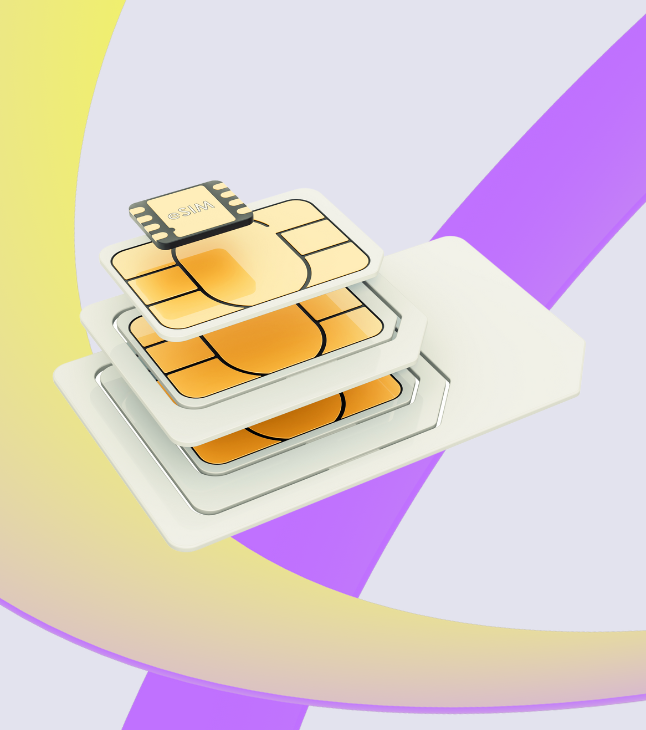In this blog post, we’ll explore the widely circulated notion known as “the promise” surrounding IoT eSIM. This concept is heavily advertised in both online and offline channels, suggesting that IoT eSIM can empower companies to break free from the operator lock-in, a standard limitation when utilizing physical SIM cards in IoT projects. Certain industry players even label this constraint as the “Freedom to Leave.” However, the reality falls far short of the freedom that customers typically expect from IoT eSIM.
Background of eSIM false promises
IoT enables businesses to get closer to the end-user, gaining insights into how their products are used in the field to derive valuable data for predictive maintenance or to enable environmental monitoring. All of those features require smart devices to have a data connection regardless if they are stationary or moving nationally, internationally, or even globally.
Hence, connectivity is a key concern in IoT, particularly for moving use cases or in situations where it is not clear in which region the devices may connect. Those devices, when using mobile data connections may roam for indefinite periods leading to the desire to localize the connectivity as much as possible. This is why GSMA defined the standards on remote SIM provisioning for M2M communications, broadly known as an eSIM.
The main promises of eSIM (when being marketed) are:
- That device manufacturer and IoT service provider can localize mobile data connections depending on which region devices are being used
- That mobile service providers can be exchanged at any point in time
As eSIM deployments gain increasing traction in the IoT industry, we naturally receive a growing number of requests where businesses that introduced eSIM ask either to change the SIM profile to a new mobile service provider or to add a new SIM profile for enhanced localization.
However, this promise for our industry cannot easily be addressed by the current eSIM standard which is SGP.01/02. Why not? Continue reading to find out why.
The current state of eSIM
To fully understand why we are talking about the “false promise to leave” (as we write this article in 2023) we need to discuss the current state of the eSIM available on the market.
Components of an eSIM eco-system
A Remote SIM Provisioning platform (RSP) defines the following components in the IoT-based eSIM standard:
- SM-DP: this is where SIM profiles are provided by a mobile operator to be later downloaded to the SIM
- SM-SR: is the component that takes SIM profiles from SM-DP to ensure secure download of the profiles to the SIM in the device. It also initiates SIM profile swaps in the device between those already available in the SIM
- eSIM Bootstrap profile: the Operating System (OS) running on the SIM card is loaded with a bootstrap profile in order to enable a device to find a connection when it starts for the very first time.
- Operator SIM profiles: are SIM profiles that can be provisioned to an eSIM and the SIM can switch between those. The amount of profiles that can be stored on a SIM is limited and depends on the memory capacity, and OS used in the SIM
The limitation of eSIM today
The limitation in the current standard is that the SM-SR is connected with the Operating System (OS) running in the SIM card, which means the eSIM in the device only accepts one specific SM-SR to receive SIM profiles from.
As the SM-SR is connected with one or at maximum multiple SM-DPs, the amount of profiles that can be made available and activated in the SIM depends on the number of SM-DPs connected to this SM-SR.
That said, when you introduce currently available IoT eSIMs for your IoT deployments and you aim to switch a SIM profile, you can only change to a profile that is accessible by the SM-SR of your selected eSIM provider.
This means you are limited by the operator agreements your eSIM provider made. When you still aim to swap to an operator that is not integrated with your SM-SR, you can either request your new mobile partner to integrate their SM-DP with your current provider SM-SR, or you ask your current SM-SR partner to swap to the new one. However, this SM-SR swap procedure must be initiated by your current provider.
The first option may have excess costs for your business, but the latter option of an SM-SR swap is usually not supported by competing mobile operators.
→ If you want to decide if IoT eSIM is for you; Here you can read our: guide for selecting eSIM for IoT Devices
The implication of eSIM limitations
The implication of the limitations outlined above is that whichever eSIM provider you select, the profiles available for your eSIM profiles are limited by those integrated to your selected RSP.
This leads to the fact, that you are locked into your eSIM provider for profile switches in the same way you are locked in by physical SIMs with your selected mobile operator. Ending up in the same position that you tried to avoid.
Additionally, eSIMs carry considerable additional costs over physical SIM cards. This is due to the higher complexity and costs involved in providing and maintaining the RSP capability. As the added fees are applicable for every profile swap, the question arises whether the flexibility the current eSIM standard provides is worth the additional investment. Of course, there is no single answer to this and it depends very much on your particular IoT use case.
However, at this stage, we can only recommend you to carefully evaluate the utilization of eSIMs in your IoT deployments. Saying that we are here to support you with a free evaluation of your IoT use case and help guide you in your “IoT eSIM vs. Physical IoT eSIM” decision, which will best fit your business today and in the future.
Future perspective of IoT eSIM
In response to the challenges the current eSIM standard for IoT brings along, the GSMA has defined a new standard referred to as SGP.31/32.
The new standard is based on the simpler RSP standardization for consumer devices, and it addresses the complexity of integrating between providers as discussed above. Apart from making RSP simpler and more cost-effective, the new standard aims to avoid the provider lock-in experienced with the current SGP.1/2 standard.
However, there is still a long way until the new RSP standard-based solutions reach the market. The GSMA specifications were released in May 2023 and, considering the GSMA certification process for RSP platforms required we anticipate its first commercial availability in 2025.
Conclusion about eSIM reality
This article is not to make a point against IoT eSIM, but to honestly outline the current eSIM-standard significant limitations. In order to overcome one of the primary reason for eSIM deployments and to prevent mobile operator lock-in for your IoT deployments going forward.
As eSIM deployments bring excessive costs for the SIM hardware, alongside the fees for every invoked SIM profile swap, you should consider if your use case really requires the usage of an eSIM over a traditional SIM.
In case you are not sure, Freeeway is your genuine IoT connectivity partner. We are here to evaluate your requirements and come up with a recommendation. Either to deploy a traditional SIM and move to the new GSMA standard for RSP (based on SGP.31/32), or to deploy an eSIM based on the current standard known today. Our objective is to give you all the information needed to choose the best option for your IoT use case.
Contact us for a free IoT connectivity trial
If you are interested in testing our IoT connectivity solutions (standard IoT SIM or IoT eSIM) fill out the contact form. Our team will give you access to a free IoT trial:
Your form entry has been saved and a unique link has been created which you can access to resume this form.
Enter your email address to receive the link via email. Alternatively, you can copy and save the link below.
Please note, this link should not be shared and will expire in 30 days, afterwards your form entry will be deleted.




